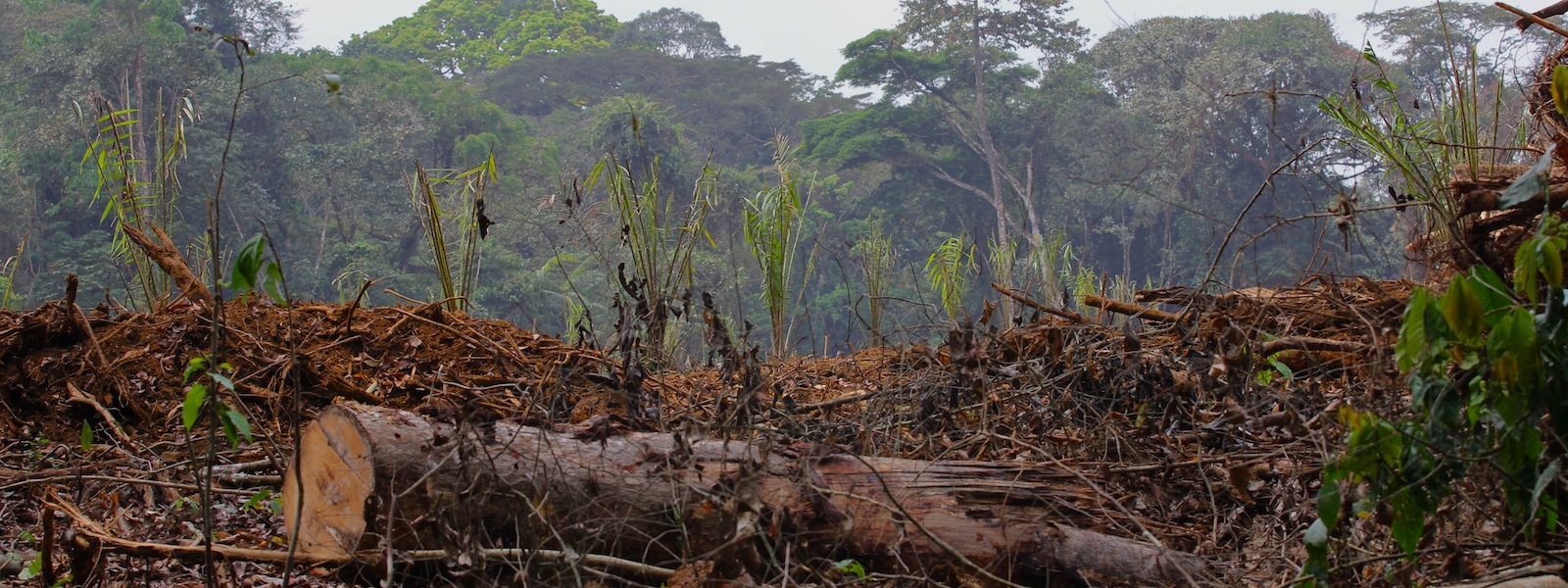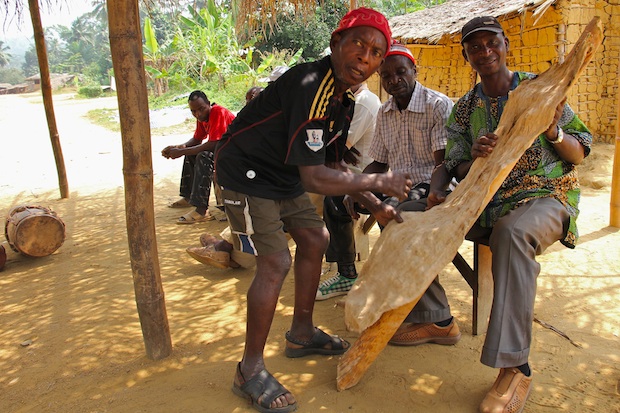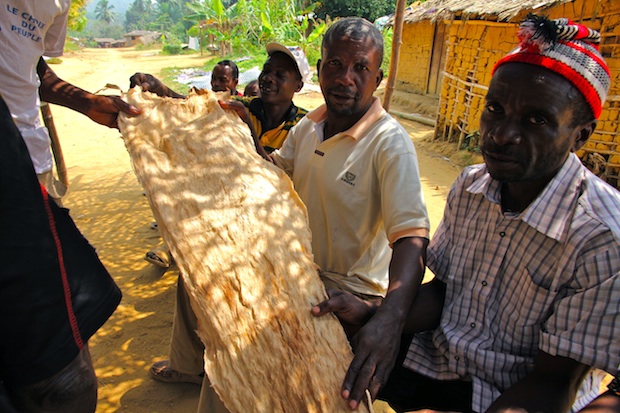Checking out barkcloth and the wood used to make it in Lipenja II, one of the villages located inside the Herakles Farms palm oil concession area. Lipenja II is surrounded by dense forest. There’s a dirt road that connects Mundemba to Fabe and Lipenja, but from Lipenja to Lipenja II there’s nothing more than a narrow motorcycle track the villagers have cleared themselves. Although Lipenja II is only about 55 km (35 miles) from Mundemba, the trip to Lipenja II takes well over two hours during the dry season.
In Lipenja II the forest is the source of food and income for everyone. The villagers have their farm plots inside the forest, where they grow food crops and cocoa. They gather fruits, nuts, honey, bark and plants for food and medicine. The women sell bush mango seeds to Nigerian traders who travel throughout the area. The forest is everything, people say.
The villagers in Lipenja II are opposed to the Herakles Farms project. The company says it will not go where it is not welcome. But many questions remain. Will the voices of the villagers be heard in what has been a “top-down” and secretive project from the start? And if the project respects the villagers’ wishes, how much forest will be left standing around Lipenja II and what will that mean for the future of the village?
People in Lipenja II are vocal about the need for development. They want a decent road to connect their village to Mundemba (and beyond), so they can get perishable crops to market. There’s no radio or mobile phone coverage in Lipenja II and villagers want improved communications. They want jobs. But they don’t want projects imposed from outside that take away what is most valuable: the forest.


